Hailstones are an incredible phenomenon that really reminds us of nature’s awesome power. Gargantuan hailstones can cause injuries to people and animals, destroy crops, and damage buildings, so let’s discover the largest hailstone ever (it was bigger than a softball!) and other record-breaking hailstone facts.
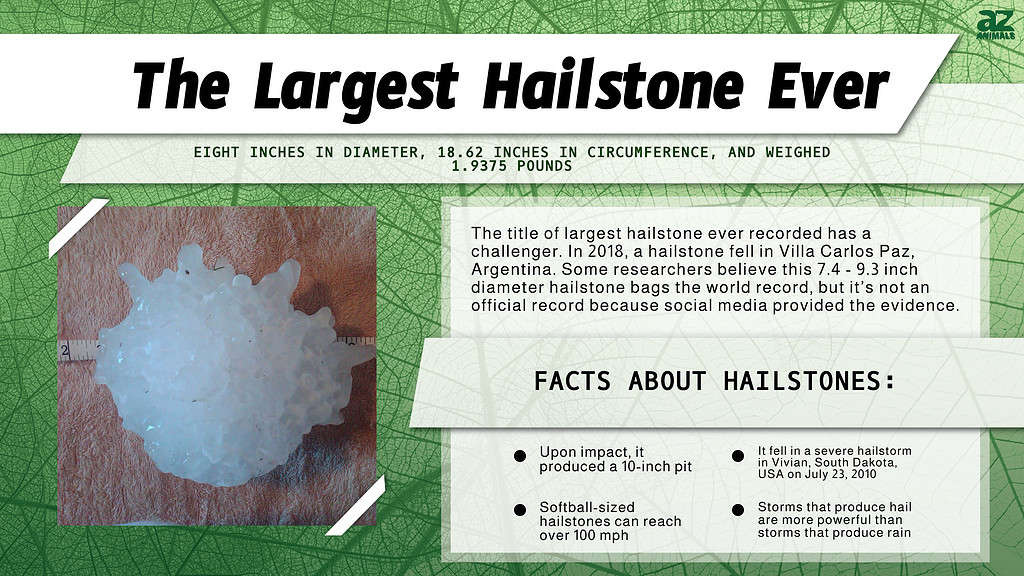
How Big Is the Largest Hailstone Ever?
The largest hailstone on record measured eight inches in diameter, 18.62 inches in circumference, and weighed 1.9375 pounds. It produced a 10-inch (25 cm) impact pit.
The official record-breaker fell in a severe hailstorm in Vivian, South Dakota, on July 23, 2010. It was discovered in the ice after the storm, which produced huge hailstones (many over six inches), 80 mph winds, and a brief tornado.
However, the record for the largest hailstone ever recorded has a challenger. In 2018, a storm raged over Villa Carlos Paz, Argentina, and produced a gargantuan hailstone.
Some researchers believe these 7.4 – 9.3 inch diameter hailstone bags are world records, but they’re not official records because social media provided the evidence.
Victoria’s Hailstone is named for the girl who preserved it in her freezer (she saw a chunk fall off on impact and left it in the freezer for several hours before measuring it!)

A hailstone’s danger comes not only from its weight but from how fast it’s falling.
©Cirkovic Milos/Shutterstock.com
Discover the Largest Storms Ever
Tropical cyclones, also known as hurricanes, cause Earth’s biggest storms. These mega-storms have caused devastation across the planet since time began. These spinning mega-storms have catastrophic impacts across the globe. Discover some of the largest storms in history; it’s likely most of them included large hailstones.
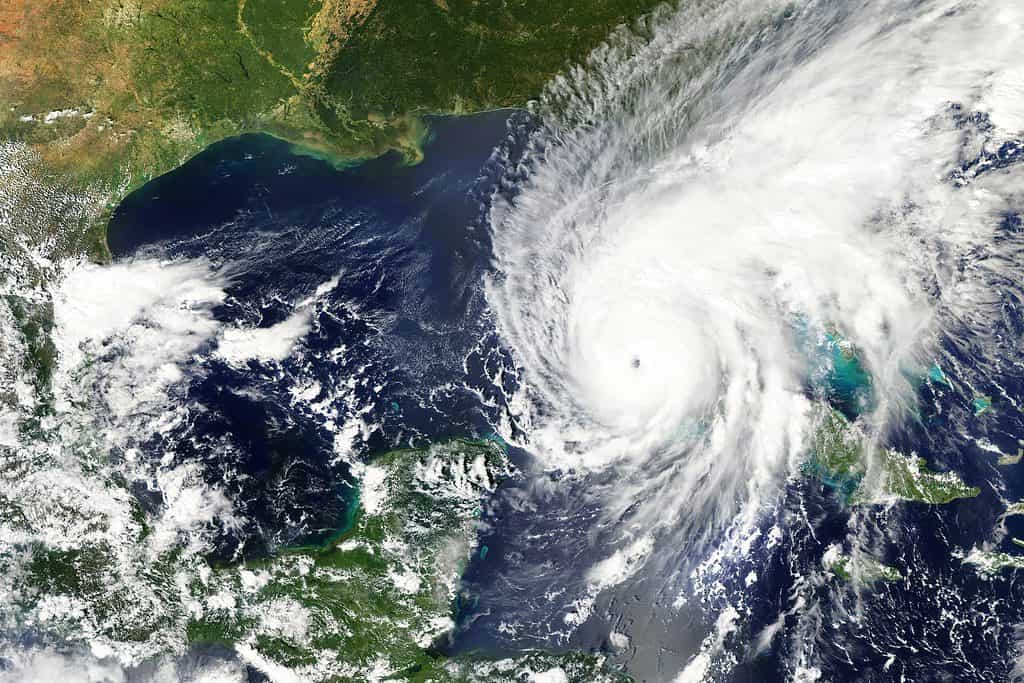
These spinning mega-storms have catastrophic impacts across the globe.
©lavizzara/Shutterstock.com
1. Typhoon Tip, the Largest Storm on Record
Typhoon Tip developed over the Atlantic Ocean on October 12, 1979. This mega storm was the largest on record, spanning 1,380 miles (2,220 kilometers). That’s as far as New York City is from Dallas and even bigger than the distance between the United Kingdom and Finland (1,130 miles)!
The typhoon spanned 300 kilometers an hour at its peak and weakened just a little before hitting Japan. It killed 86 people and destroyed 20,000 homes.
2. Super Typhoon Nina
In 1975, super typhoon Nina dumped a year’s worth of rain on China bursting over 60 dams and causing a 10-kilometer wide, 9.8-23 feet tall wave. The wave destroyed 34 miles of land and killed 26,000 people. Estimates suggest another 145,000 people later died of starvation and disease.
This is the most destructive storm on record, even though it had spent most of its power crossing the central Taiwan mountain range.
3. Hurricane Irma
One we might remember well was Hurricane Irma in 2017, which hit the Caribbean islands at 185 miles per hour (298 kph). Irma’s storm was still raging two weeks later when it hit Puerto Rico, killing 3,000 people and changing the land’s geography and biodiversity forever.
4. Iranian Blizzard
In February 1972, a massive storm dumped 3-8 meters of snow (10-26 feet) on southern and central Iran after a four-year drought.
Avalanches buried 8,000 people and destroyed infrastructure to the extent that the flu spread and killed 100% of some villages. The snowstorm killed 4,000 people, but the snowmelt killed even more.
5. Great Hurricane of 1780
Records indicate 22,000 people died in the eastern Caribbean after a massive storm and hurricane hit the islands in 1780. Some of the fatalities were British and French sailors who died in the churning seas.
6. 100-Year War Hail Storm
Ancient texts record large hailstones as acts of God before science explained how they worked.
In April 1360, a massive hailstorm broke out over the heads of the British and French armies. It was so ferocious that 1000 men and 6000 horses were killed in the panicked stampede. King Edward believed it was a sign from God and pursued peace with the French as a result.
What Is a Hailstone?
Thunderstorms produce hailstones, which are balls of ice ranging in size from peas to bigger than softballs.
Experts are unsure why these pieces of ice are called hail, but some suggest the word comes from the Old Norse hela, which means frost.
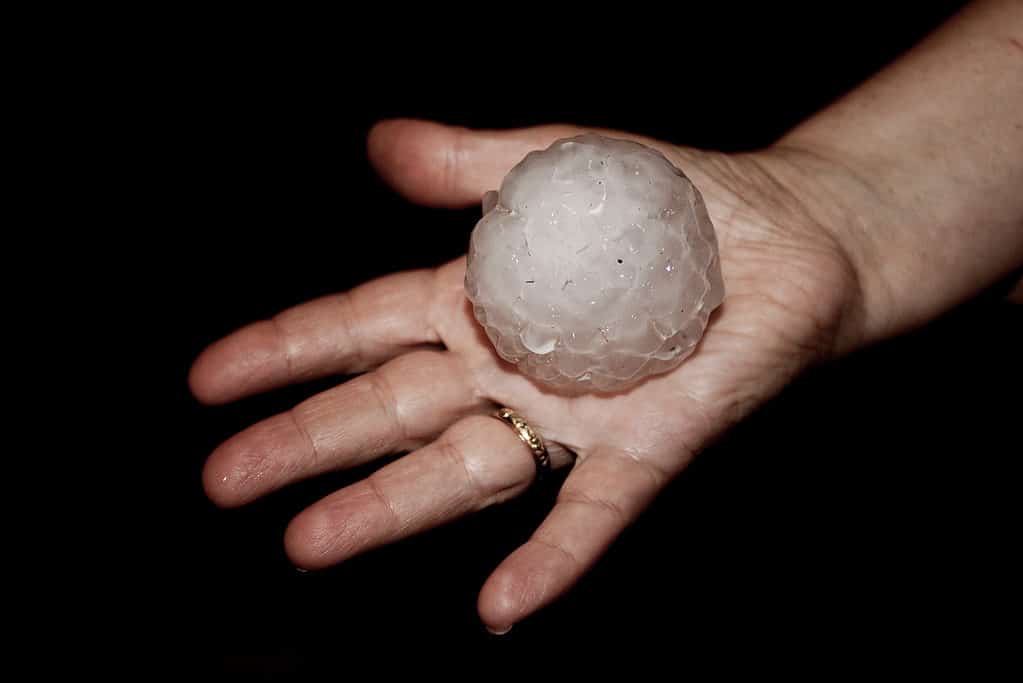
Hail is formed in thunderstorms, which are vast, moist, unstable storms heated by the sun and characterized by multiple updrafts and downdrafts.
©Norman Allchin/Shutterstock.com
How Are Hailstones Formed?
Let’s discover how the largest hailstones are formed.
Hail is formed in thunderstorms, which are vast, moist, unstable storms heated by the sun and consist of multiple updrafts and downdrafts.
Water droplets, tiny pieces of ice, or snowflakes get caught in the updrafts and freeze in the higher, colder air, turning to hard ice.
When they reach the warmer downdrafts, they fall and collect more surface moisture before launching upwards again on an updraft, where the extra moisture freezes.
This cycle continues to grow a hailstone until it becomes too heavy for the updrafts and falls to earth. Large sliced hailstones display an onion-like structure from their updraft and down draft journey.
Storms that produce hail are more powerful than storms that produce rain. The more power the updrafts have, the more massive the hailstones grow. Some of the most powerful updrafts reach an incredible 160 km per hour!
Hailstones caught in a powerful cycle can stick together, creating huge lumps of ice called an agglomerate. Agglomerates often produce spikes and horns as they grow. These are the record-breaking hailstones that produce the largest hailstones ever discovered.
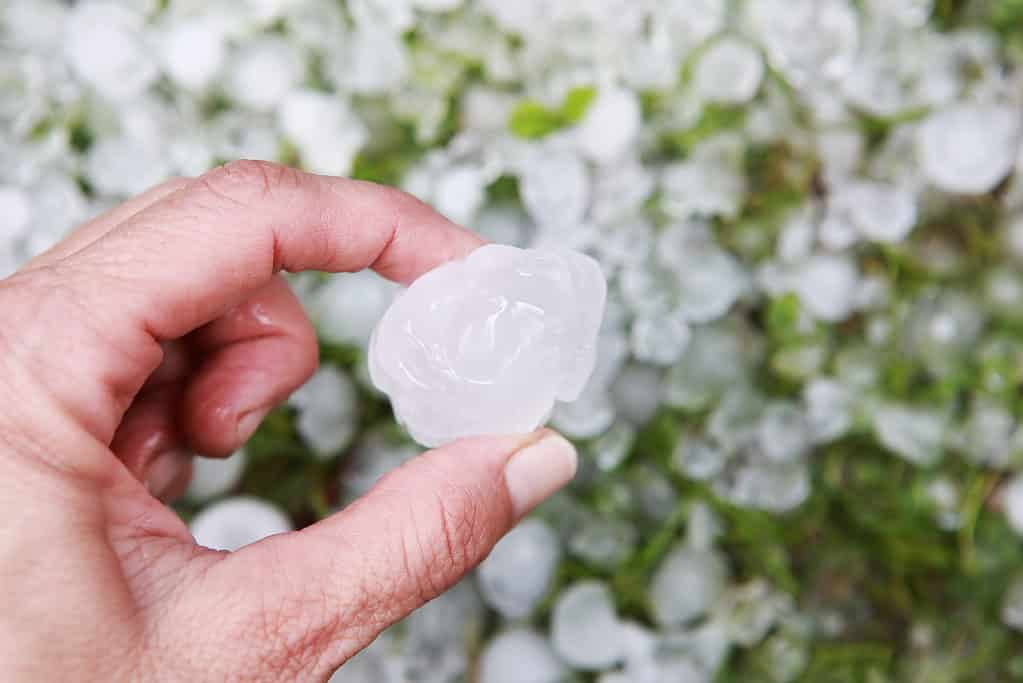
Water droplets, tiny pieces of ice, or snowflakes get caught in the updrafts and freeze in the higher, colder air, turning to hard ice.
©Suzanne Tucker/Shutterstock.com
Does It Hail in Hot Countries?
Yes, it hails in hot countries. Hail is more common in mid-latitude countries where the ground is warm and the atmosphere is cool, but warm-up and cool-down drafts can create large hailstones in any country.
Can Hailstones Kill People?
Yes, hailstones are heavy and fast enough to kill people and animals. Since 2000, four people have died from hailstone strikes. One victim was Juan Oseguaera, a nineteen-year-old who was hit on the head in March 2000 by a softball-sized hailstone.
Hailstones are dangerous not only because of their weight but also because of how fast they fall. Small hailstones reach a terminal velocity of around 10 mph (30 kph), which is enough to sting, but softball-sized hailstones fall much faster. They can reach over 100 mph (175 kph), which meteorologists say is fast enough to break bones and glass.
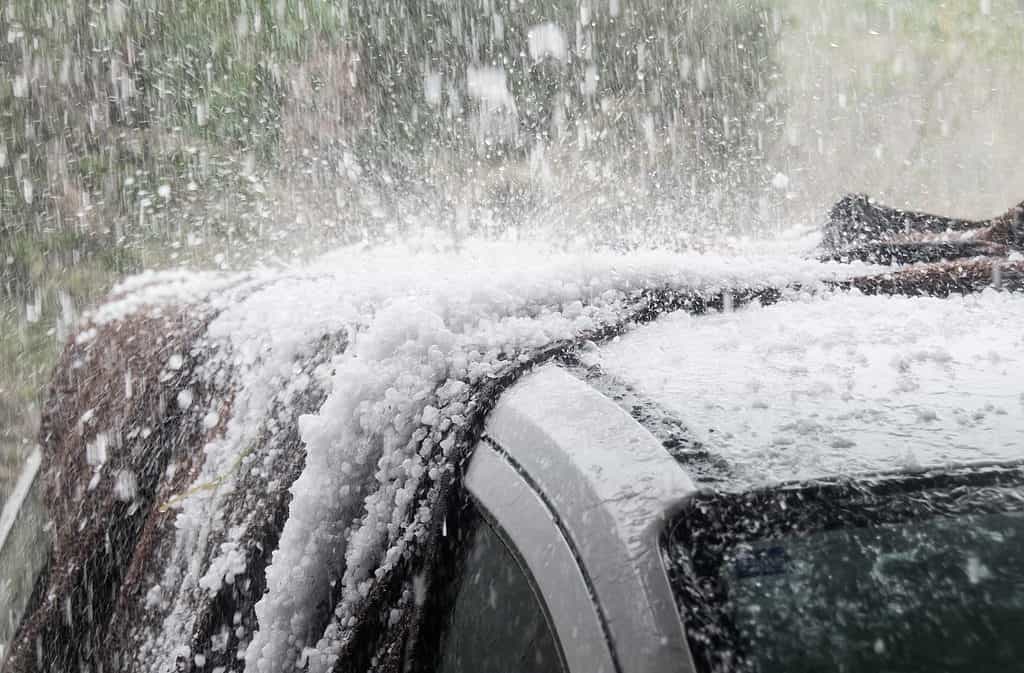
Hailstone’s danger comes not only from the weight but from how fast it’s falling.
©Ben Romalis/Shutterstock.com
Largest Hailstone Records
Large hailstones are astonishing, so let’s discover a few more record-breakers from around the world.
Largest Hailstone Circumference
The largest hailstone circumference ever discovered measured a whopping 18.75 inches (47.6 centimeters). This mega hailstone fell in Aurora, Nebraska, on June 22, 2003.
Heaviest Hailstone Weight
The heaviest hailstone ever recorded fell in the Gopallganj district of Bangladesh on April 14, 1986. It weighed 2.25 pounds (one kilo). The storm that produced this record-breaker killed 92 people.
Europe is not far behind with its own heavyweight hailstones. In August 1958, a 2.1-pound (.97-kg) hailstone fell in Strasbourg, France.
Largest Hailstone Accumulation
In 1959, Seldon, Kansas, experienced a massive hailstorm. The hailstones, which were 19 inches thick, covered a 54-square-mile (140-kilometer) area.
Deadliest Hailstorm Ever
In April 1888, India’s Utter Pradesh’s hailstorm produced orange and cricket ball-level hail, killing 246 people and 1,600 cattle and sheep. Eyewitness reports state the hail reached two feet deep in some areas.
What Is Gorilla Hail?
Gorilla hail is a term coined by storm chaser and meteorologist Reed Timmer to describe the huge hailstones that were falling west of Llano, Texas. Although they weren’t large compared to record-breaking sizes, the catchy name is stuck.
Discover The Biggest Hailstone Ever Recorded
So, let’s recap!
We wanted to discover the largest hailstone ever recorded and found out it fell in South Dakota in 2010. It was bigger than a softball, with an eight-inch diameter (roughly the length of an average-sized banana) and an 18.65-inch circumference, and it weighed 1.93 pounds.
That is certainly a massive hailstone by any stretch, but the world record is up for grabs each time a powerful storm’s updrafts and downdrafts work their hail magic.
The photo featured at the top of this post is © Andrzej Sliwinski/Shutterstock.com
FAQs (Frequently Asked Questions)
What is a hailstone?
Thunderstorms produce hailstones, which are balls of ice. They range from pea size to bigger than softball size.
Can hailstones kill people?
Yes, hailstones are heavy and fast enough to kill people and animals. Since 2000, four people have died from hailstone strike. One victim was Juan Oseguaera a nineteen-year-old who was hit on the head in March 2000 by a softball-sized hailstone.
Thank you for reading! Have some feedback for us? Contact the AZ Animals editorial team.







